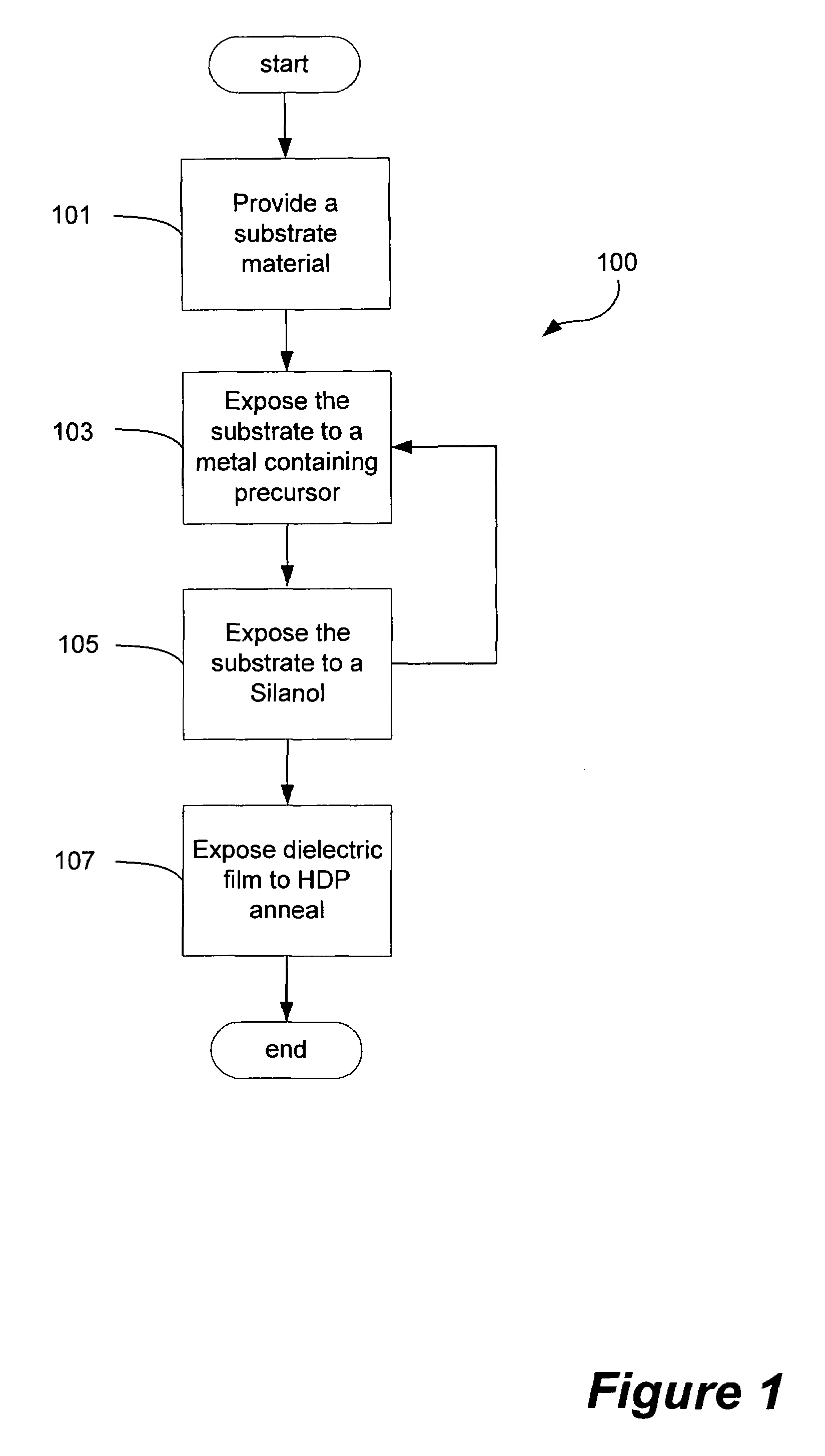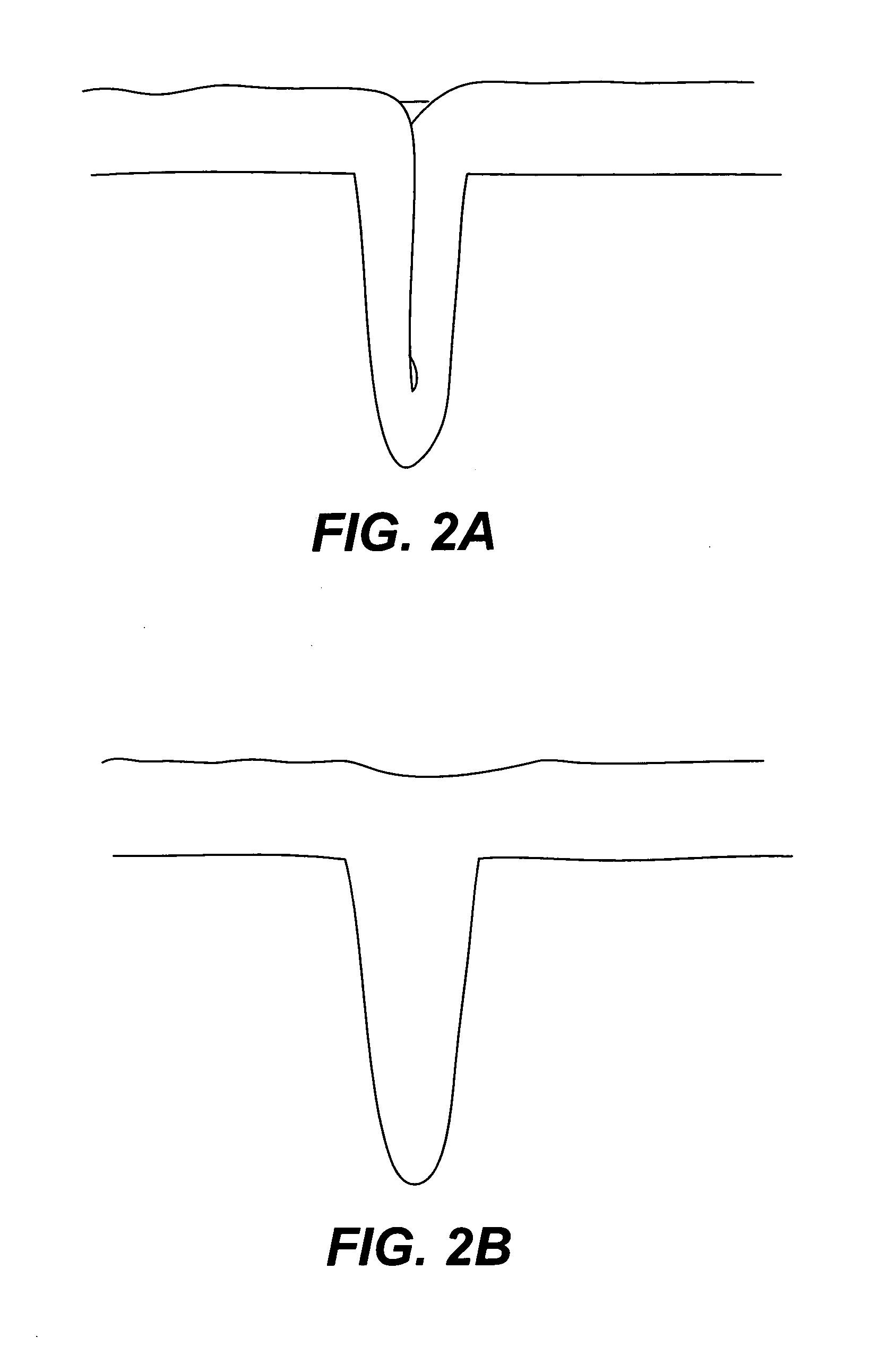Method for controlling properties of conformal silica nanolaminates formed by rapid vapor deposition
a technology of conformal silica nanolaminates and vapor deposition, which is applied in the direction of basic electric elements, semiconductor/solid-state device manufacturing, electric apparatus, etc., can solve the problems of reducing budgets, void-free filling of high aspect ratio spaces (ar>3.0:1) becoming increasingly difficult, and reducing dimensions
- Summary
- Abstract
- Description
- Claims
- Application Information
AI Technical Summary
Benefits of technology
Problems solved by technology
Method used
Image
Examples
example 1
O2 Gas HDP Anneal
[0058]Time: 700 s[0059]LF Power: 5750 W[0060]Gas flow rate: 250 sccm[0061]Avg. Temperature: 469° C.[0062]Stress, Post Anneal: 0.537 dyn / cm2 [0063]k, Post Anneal: 3.87[0064]WERR, Post Anneal: 1.76[0065]% Film Shrinkage: 3.06
example 2
Argon Gas HDP Anneal
[0066]Time: 700 s[0067]LF Power: 5750 W[0068]Gas flow rate: 250 sccm[0069]Avg. Temperature: 469° C.[0070]Stress, Post Anneal: 2.53 dyn / cm2 [0071]k, Post Anneal: 3.86[0072]WERR, Post Anneal: 2.77[0073]% Film Shrinkage: 12.15
[0074]While not wishing to be limited by theory, it is believed that these differences are due to cross-linking in the densified PDL film. Note also that film stress variation measured before and after the anneal is consistent with the shrinkage measurements, i.e., in the case of the Argon anneal, there is more film shrinkage and more tensile stress after the anneal than in the O2 anneal. However, in both cases, reduced dielectric constant values indicate that H2O has been removed from the film. This is substantiated further by the FTIR spectra shown in FIGS. 5A and B, which show an increase in the size of the Si—O peak post-anneal (at 1058-1062 cm−1) and in the disappearance of the Si—OH peak at 3641 cm−1.
[0075]FIG. 6 is a plot of % film shrin...
PUM
| Property | Measurement | Unit |
|---|---|---|
| temperature | aaaaa | aaaaa |
| temperature | aaaaa | aaaaa |
| time | aaaaa | aaaaa |
Abstract
Description
Claims
Application Information
 Login to View More
Login to View More - R&D Engineer
- R&D Manager
- IP Professional
- Industry Leading Data Capabilities
- Powerful AI technology
- Patent DNA Extraction
Browse by: Latest US Patents, China's latest patents, Technical Efficacy Thesaurus, Application Domain, Technology Topic, Popular Technical Reports.
© 2024 PatSnap. All rights reserved.Legal|Privacy policy|Modern Slavery Act Transparency Statement|Sitemap|About US| Contact US: help@patsnap.com










